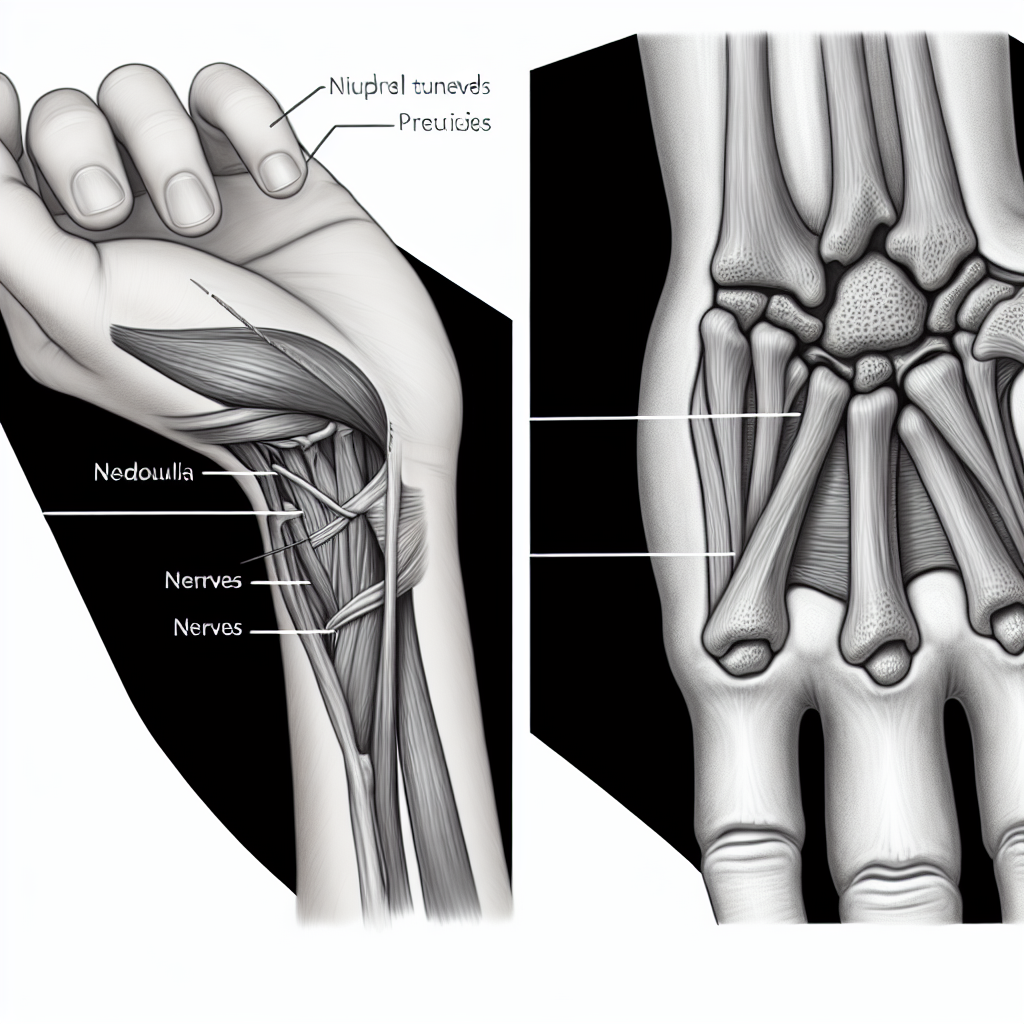Carpal Tunnel Syndrome (CTS) is a common condition that affects the hand and wrist, causing pain, tingling, numbness, and weakness. It occurs when the median nerve, which runs through the carpal tunnel in the wrist, becomes compressed. This condition can impact daily activities, making tasks such as typing, writing, or gripping objects difficult.
Understanding the causes, symptoms, and treatment options for CTS is crucial for managing the condition effectively. This article provides an in-depth explanation of Carpal Tunnel Syndrome, covering its anatomy, causes, symptoms, diagnosis, and treatment approaches to help patients and professionals alike.
What Is Carpal Tunnel Syndrome?
Carpal Tunnel Syndrome is a condition caused by compression of the median nerve as it passes through the carpal tunnel, a narrow passageway in the wrist. The median nerve controls sensation and movement in the thumb, index finger, middle finger, and part of the ring finger. When this nerve is compressed, it leads to symptoms such as pain, numbness, and weakness.
This condition is commonly associated with repetitive hand movements, certain medical conditions, or wrist injuries. It can range from mild discomfort to severe pain and loss of function, significantly impacting a person’s quality of life.
Anatomy of the Carpal Tunnel Syndrome
Understanding the anatomy of the wrist helps to explain how CTS develops:
- Carpal Tunnel: A narrow, rigid passageway in the wrist, made of bones and ligaments.
- Median Nerve: A key nerve that passes through the carpal tunnel, providing sensation to the thumb, index, middle, and part of the ring fingers.
- Flexor Tendons: Nine tendons that also pass through the carpal tunnel, allowing for finger movement.

When the space within the carpal tunnel becomes restricted or inflamed, the median nerve can be compressed, leading to the symptoms of Carpal Tunnel Syndrome.
What Causes Carpal Tunnel Syndrome?
Several factors can contribute to the development of CTS, including:
- Repetitive Hand Movements: Activities such as typing, sewing, or assembly-line work.
- Medical Conditions:
- Diabetes
- Hypothyroidism
- Rheumatoid arthritis
- Wrist Injuries: Fractures, sprains, or dislocations.
- Pregnancy: Hormonal changes and fluid retention.
- Anatomical Variations: Smaller carpal tunnel size.
- Obesity: Increased pressure within the wrist.
While these factors increase the risk, not everyone exposed to them will develop CTS.
What Are the Symptoms of Carpal Tunnel Syndrome?
Common symptoms of CTS typically worsen over time without treatment. These include:
- Numbness and Tingling: Especially in the thumb, index, middle, and part of the ring finger.
- Pain: Often described as burning or aching in the wrist or hand.
- Weakness: Difficulty gripping or holding objects.
- Night Symptoms: Symptoms often worsen at night or early morning.
- Clumsiness: Dropping items or reduced fine motor skills.
Early detection and treatment are essential to prevent long-term damage.
Special Tests for Carpal Tunnel Syndrome
Several clinical tests can help diagnose CTS. These include:
- Phalen’s Test:
- Performed by flexing the wrists fully and holding the position for 60 seconds.
- Positive result: Tingling or numbness in the fingers.
- Tinel’s Sign:
- Lightly tapping over the median nerve at the wrist.
- Positive result: Tingling or pins-and-needles sensation.
- Durkan’s Compression Test:
- Applying pressure over the carpal tunnel for 30 seconds.
- Positive result: Symptoms of pain or numbness.
- Electrodiagnostic Tests:
- Nerve Conduction Studies (NCS): Measures electrical impulses in the median nerve.
- Electromyography (EMG): Assesses muscle and nerve function.
- Ultrasound or MRI: Used in complex cases to visualize the carpal tunnel and its structures.
How Do We Treat Carpal Tunnel Syndrome?
Treatment for CTS depends on the severity of the condition. Early intervention can prevent progression and improve outcomes.
Carpal Tunnel Syndrome Treatment Approaches
Non-Surgical Treatments:
- Rest and Activity Modification:
- Avoid repetitive hand movements.
- Take frequent breaks.
- Wrist Splints:
- Worn at night to keep the wrist in a neutral position.
- Physical Therapy:
- Exercises to improve flexibility and reduce pressure on the median nerve.
- Examples: Wrist stretches, nerve gliding exercises.
- Medications:
- Nonsteroidal anti-inflammatory drugs (NSAIDs) for pain relief.
- Corticosteroid injections to reduce inflammation.
Surgical Treatments:
- Carpal Tunnel Release Surgery:
- Performed when conservative treatments fail.
- Cuts the transverse carpal ligament to relieve pressure on the median nerve.
Carpal Tunnel Syndrome Differential Diagnosis
CTS symptoms can overlap with other conditions, making accurate diagnosis essential. Common differential diagnoses include:
- Cervical Radiculopathy: Nerve compression in the neck causing arm symptoms.
- Tendonitis: Inflammation of wrist tendons.
- Thoracic Outlet Syndrome: Compression of nerves or blood vessels in the shoulder.
- Peripheral Neuropathy: Nerve damage caused by diabetes or other conditions.
- Arthritis: Joint inflammation in the wrist.
Carpal Tunnel Syndrome Prognosis and Expectations
- Prognosis:
- Early treatment leads to excellent outcomes for most patients.
- Severe cases may require surgery but generally show significant improvement post-surgery.
- Long-Term Expectations:
- With proper treatment, most patients can resume normal activities.
- In untreated cases, nerve damage can become permanent, leading to chronic pain and weakness.
Conclusion
Carpal Tunnel Syndrome is a manageable condition when identified and treated promptly. Understanding its causes, symptoms, and treatment options empowers patients to seek appropriate care. If you suspect you have CTS, consult a healthcare professional for accurate diagnosis and tailored treatment. Early intervention is key to preserving hand and wrist function.
